
The Legend Lives Again....
The Southeastern Cord
Gerald L Manning
Factoid....
The articles and photos capture the design and development of the Southeastern Cord.

Southeastern 815-01 displayed at recent
Concours 'd Elegance
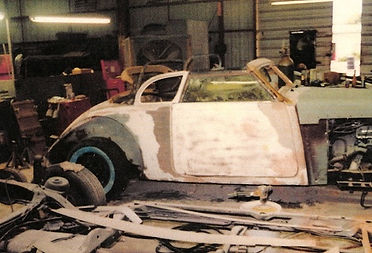
Southesatern 815 PROTOTYPE in 1980 early stage of manufacturing develoment.
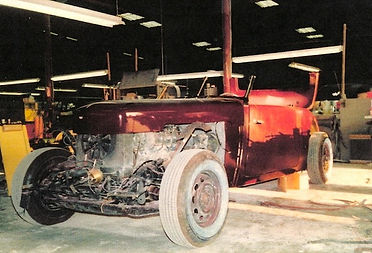
Southeastern 815 PROTOTYPE in 1981 later stages of manufacturing with paint.
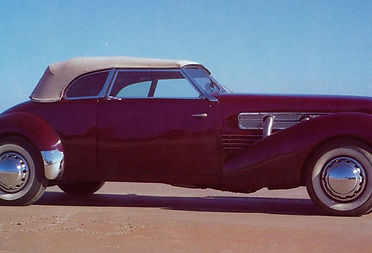
Cord 815 Prototype out of production and presented in 1981 Promotional Materials
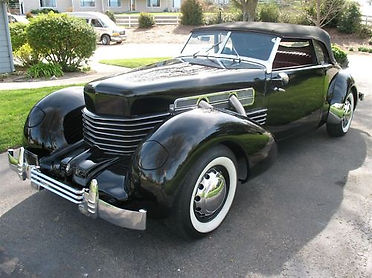
Southeastern 815 PROTOTYPE reoainted Black
as it appears today.
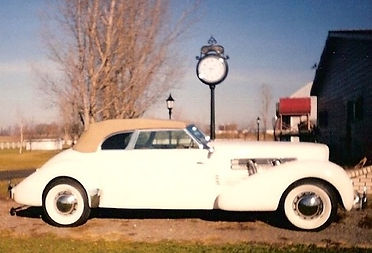
Southeastern 815-04 'The Liberace Cord"
as it appears today.
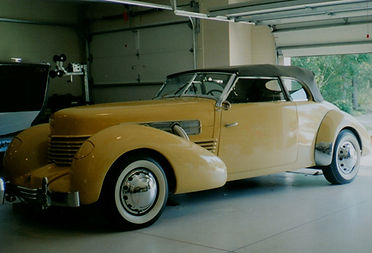
Southeastern 815-07 as it appears today with turbocharger. The last car produced.
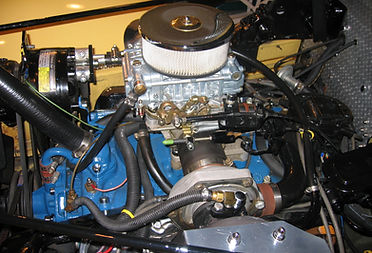
Southestaern added Turbochargers to the modern General Motors 'E Body" (Olds Toronado) front wheel drive train.
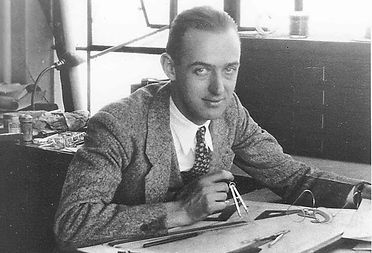
Original Cord Designer, Gordon Buehrig upon seeing the Southeastern, stated "The Southesatern is absolutely amazing."
Occasionally a legendary car is launched, announcing a change in design for years to come. The Cord was a legend in 1929 and in 1936. The Oldsmobile Tornado was a legend when it was launched in 1966.
Both of these landmark cars had front-wheel-drive. The Cord was the first American production car to introduce front-wheel-drive in 1929, and in a Motor Trend research study that asked domestic and European automotive designers what car they thought had the best examples of “clean, pure and beauteous design”, their overwhelming favorite was the 810/812 Cord. The 1966 Oldsmobile Tornado with its “E-body-power-unit” was the first American car to reintroduce front-wheel-drive. It was also recognized by Motor Trend, as their overwhelming choice for the “1966 Motor Trend Car of the Year”.
These two legends were reborn in 1981. In Largo, Florida the record setting, award winning, and elegantly designed 810-812 Cord was reengineered and fitted with the modern landmark General Motor’s “E-body” front-wheel-drive technology. This resulting Cord 815SE Phaeton was launched with a commitment to “absolutely unmodified original style coachwork, and complete dependability from mechanical components”. This hand built car has come to be known more commonly as the “Southeastern Cord”.
Two years later with one prototype and only seven Southeastern Cords produced; and interest rates hovering around the 22% rate--the latest $65,000 Cord legend, again fell victim to the prevailing economic landscape.
REACTIONS TO THE NEW “SOUTHEASTERN CORD”
Even though the success of the Southeastern could not withstand the damaging effects of the economic environment, the reactions to the car were ‘spectacular’. Noted Packard automotive executive J. Jean Vincent became aware of the legendary Southeastern Cord upon receiving a telephone call from his friend and famed industrial and automotive designer, Brook Stevens. Stevens, told Vincent, who was on a trip to Switzerland, about the availability of one of the Southeasterns. Vincent’s first reaction was that he was temporarily out of the car hobby, and after owning the original Cary Grant Cord, he wasn’t especially interested in another one. Brook, who had just viewed the car in a museum in Australia persisted and said, “the Southeastern is a spectacular car.” He described the expert original design work and superb modern mechanical components that went into producing the car.
Vincent, without even seeing the car purchased it. That was in 1983. He has owned the last Southeastern produced, car number 815-07, ever since. Original in every detail, and with less than 1,500 miles on it, he and his wife Barbara sit and marvel at the beauty of their Cigarette Cream colored recreation. Vincent states that while they may sell other cars in their collection, “they will never sell their ‘turbocharged Southeastern’.”
In a Southeastern advertisement for the 1981 ‘Gordon Buehrig Signature Series Southeastern’ original Cord 810 Designer Gordon Buehrig states, “This is the concept that I had always hoped for. It encompasses the proper blending of the original design with the dependability and convenience of modern mechanical components.” Buehrig, considered by many to be the foremost automobile designer of the 20th century goes on, “The car you see before you now is absolutely amazing. Had things been better in the mid-thirties, more money and a longer life span, I would like to have seen the car evolve into what you see now.”
Also in 1981, noted author and Car Collector Magazine Editor Dennis Adler collaborated with Cord designer Alex Tremulis to compare a new Southeastern to an original Phaeton styled Cord. After careful study and behind the wheel test drives of both cars, Adler reports in his June 1981 Car Collector Magazine article titled ‘The Classic Imposter, A Mirror Image Replica of the Cord 812’ Tremulis’ reaction was “the Southeastern was a wondrous piece of work”. Alder’s own response was “The classic design of Gordon Buehrig has been reborn in an uncanny reproduction, which details most succinctly the lines of the original automobile, yet integrates, with scarcely a trace, a modern front-wheel-drive power train.”
MODERN FRONT-WHEEL-DRIVE ‘TURBOCHARGED’ TECHNOLOGY
Rather than settle for a close copy, Southeastern’s absolute unmodified original style coachwork commitment demanded an exact duplicate of the original 810-812 Cord. They also felt that the only correct interpretation of the Cord, in modern form, must include the V8 powered front-wheel-drive. After carefully evaluating all foreign and domestic front-wheel-drive offerings, Southeastern settled on the latest available Oldsmobile series ‘E-body’ cars. With over 10 years of development and improvements, this technology offered unmatched component dependability. It was also reasonably compact in size and weight and would allow the necessary modification to maintain unaltered coachwork.
However, a close examination of the Classic cars produced during the late twenties and mid-thirties reveals that most of these cars have the radiator positioned in a line with the front wheel center, when viewed from the side. With an unaltered ‘E-body’ power unit used in a Cord Southeastern, the car would have to take its final drive from a point almost exactly in the center of the engine. What this meant was that about half of the engine would extend past the centerline of the front wheels, out into the area occupied by the radiator and grill. The engineering solution to this problem was to move the engine and transmission 16 ½” to the rear (lengthening the ‘E-body’ drive shaft and housing between the transmission and the front drive assembly), while leaving the front suspension and front drive shafts in their stock position. “This procedure”, according to Mike Akins, Southeastern’s Production Manager, “proved to be doubly beneficial. First, when parked beside an original car the Southeastern is indistinguishable from the original. Second, removing the engine weight from directly over the front wheels resulted in significantly improved handling”.
Mike Gorra, purchased new, and still owns the blue Southeastern number 815-06. He convinced Southeastern Owner and President Dave Samuels to install a turbocharger (which later became an advertised $3,000 option) further authenticating the 1937 supercharged Cord Phaeton. Mike reports, “As in the original ‘37, the turbocharger significantly increases performance” (from 170 to approximately 300 horsepower).
A new car advertisement that ran in the June 1980 Hemming’s Motor News listed an optional ‘diesel powered motor’. This option cost $8,000, however no research exists that any diesel-powered cars were produced. Southeastern’s advertising program also offered a 12-month/12,000 mile warranty serviceable at Oldsmobile dealers on all ‘E-body’ mechanical components.
STRUCTURAL INTEGRITY AND SAFETY
After decisions were made on the drive train, engineering and fabrication of the chassis was started. Because well-known structural integrity problems plagued the early original Phaeton styled Cords (the suicide doors would fly open when the car hit a large bump), a perimeter type chassis was constructed using 2” by 4” rectangular steel tubing with a ¼” wall thickness. Eight cross-members and a 16 gauge steel floorboard were electrically welded into place.
With occupant safety as a major consideration, each door opening was surrounded by a massive 3” by 5” steel upright diagonally braced to the frame. Doors have not one, but two side guard beams. When latched, they have positive metal to metal contact that extends from the cowl pillar to the rear door pillar. Door hinges are a full 18” long and are of the continuous type used in the original car. The frame on the Southeastern is so rigid and the door latch/hinge design so well perfected that one wheel may be removed from the car, that side of the car lowered to the ground, and the door opened and closed as usual. Torsion-bar front suspension and semi eliptic rear springs provides excellent control and handling, even with bias ply tires on the Southeastern.
HANDCRAFTED COACHWORK
Each Southeastern was built to order, and carefully handcrafted over an eight-week period. Exact specification high quality molds were created from an original 812 Cord Phaeton. Over two thousand man-hours were spent on each car built, with over one thousand inspections made during production.
From the fabrication of the chassis in huge steel jigs, to the production of the fiberglass components, every phase of the production was under the watchful eyes of quality control supervisors. Hundreds of man-hours
were spent on the preparation and application of acrylic lacquer paint. Nearly five gallons of material was applied, sanded and hand buffed to achieve a mirror like finish. Imported Connelly leathers were hand selected by Southeastern’s master trimmer. Matched first by dye-lot and again by a practiced eye before they were handsewn into their final form—to look exactly as the original did.
MODERN COMFORTS IN A CLASSIC CAR
Every modern option one would expect of a car of this caliber and vintage air was fitted as standard equipment in the Southeastern. Automatic transmission, power steering, power brakes, air conditioning, stereo radio with tape player, and power windows are standard equipment. Heating and air conditioner outlets are installed behind the original Cord’s glove compartment doors. Their presence, except when in use does nothing to break with the magic spell of the original car.
Certain things unique to the Southeastern are also fitted to the car. An electrically powered hood and trunk are two of the exclusive features. (Adler described this “flip a switch” feature as “a bit much”.) Electrically powered motors also operate the concealed headlights. While the dash, gauges, and engine turned fascia instrument panel all appear as they did in the original concealed beneath are electrically driven tachometer, quartz clock, windshield wipers, and air conditioning controls.
ATTENTION TO DESIGN AND DETAIL
Why is the Southeastern a Legend? In no small part the original Cord was a work of Art. To try to change even one detail would have diminished the greatness. According to Akins, “to assure there was no variation in the design and details, Southeasterns were only sold as ‘turnkey cars’ and never in ‘kit form’.” Items as mundane as the clamps that hold the top assembly to the windshield are exact duplicates of the original. Reliable electronic shifting was also a priority for the Southeastern. In 1981, Dave Samuels paid $50,000 to Rolls Royce for the rights to use their electronic shifting designs.
Well-known Cord expert and parts supplier Stan Gilliland recently recalled the contract he had with Southeastern when they launched the production of the car. Upon inspection of a Southeastern at a recent Auburn Cord Duesenberg Reunion, Stan recalled the parts he supplied, which included original type steering wheels, horn rims and columns, hubcaps, engine turned dash fascia plates, door sill trim, top hardware, bumpers, headlight and taillight assemblies, quarter windows, gearshift assemblies and many other small parts and supplies.
Noted Cord Author, Josh Malk also at an ACD Reunion spent time reviewing the authenticity of the Southeastern Cord being shown. He commented afterwards, he had to walk around it on multiple occasions to make sure it wasn’t an original Cord, and was impressed by the attention to design and detail..
Cord Designer Gordon Buehrig commented after evaluating the Southeastern, “From an appearance standpoint, it duplicates even the smallest details of what we created more than 45 years ago. “Perhaps the best comment was my own, when I first saw the car, ”that’s an original, isn’t it?”
“ANOTHER CAR--FOR A STAR”
The beauty, originality and dependability of the Southeastern Cord caught the attention of famed pianist Liberace. Liberace, well known for his elaborate and beautiful stage sets, purchased Southeastern 815-04 and used it to enter the stage at his many Las Vegas concerts. He would drive his “White Southeastern” on stage, exit the car in one of his white flashy costumes and proceed to the piano. The legendary Cord design provided a classy backdrop for his famous piano performances. His Southeastern’s dependable drive train assured him there would be no mechanical failures!
BIBLIOGRAPHY
Gordon Buehrig, with William S Jackson, Rolling Sculpture, A Designer and His Work, (Haessner Publishing, Newfoundland NJ, 1975).
Josh R. Malks, Cord 810/812, The Timeless Classic, (Krause Publications, Iola, WI, 1995).
“The Oldsmobile Toronado, 1966 Motor Trend “Car of the Year”, Ultimate Cars Web site, www.ultimatecarpage.com,.
Nedeau Guillaume, Blaast Performance Custom Turbochargers, www.blaastperformance.com, (computed horsepower increase on Oldsmobile 350 CI engine, after turbocharging, without any additional upgrades),
Dennis Adler, “The Classic Imposter, A Mirror Image Replica of the Cord 812”, Car Collector Magazine, June 1981.
Hemming Motor News, advertisement , June 1980.
Southeastern Sales and Advertising Materials produced and distributed in 1980-81.
Interview with Dr. Rick Zeiger (former Owner of 815-PRO, 815-01,and 815-04) .
Interview with Stan Gilliland.
Interview with Josh Malk.
Interview with J. Jean and Barbara Vincent, Taveras FL (Cigarette Cream colored # 815-07).
Interview with Myron (Bud) Roth, (Ivory colored Liberace Car 815-04)
Interview with Tom Dudley.
Interview with Bill Dixon, Tuscon, AR (former owner of # 815-PROtotype car)
Interview with Mike Akins, Clearwater Beach, FL (former Production Manager, Southeastern).
Interview with Dr. DFay Culbreth, (2002 collaboration with Mike Akins on producing a Cabriolet).
Interview with Mike Gorra Minneapolis, MN (Blue colored # 815-06). Purchased new in 1981 by Mike Gorra from Southeastern. Ordered car with supercharger and special 38 caliper handgun receptacle under dash.
Interview with Dr. Richard “Dick” Neiman, Dallas TX. (Ivory colored # 815-03).
